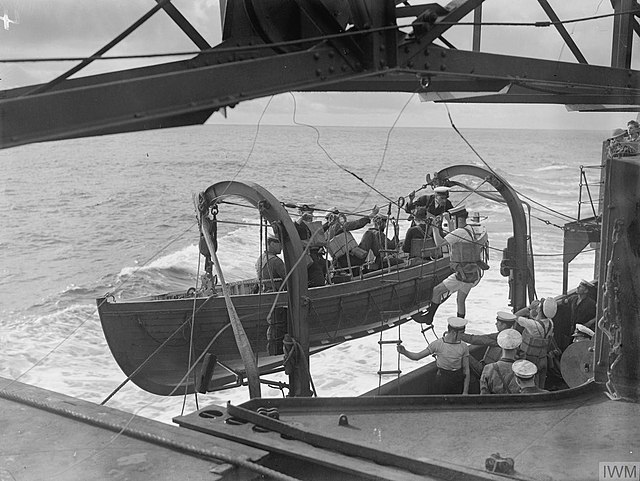A longboat is a type of ship's boat that was in use from circa 1500 or before. Though the Royal Navy replaced longboats with launches from 1780, examples can be found in merchant ships after that date. The longboat was usually the largest boat carried. In the early period of use, a ship's longboat was often so large that it could not be carried on board, and was instead towed. For instance, a survey of 1618 of Royal Navy ship's boats listed a 52 ft 4 in (16 m) longboat used by the First Rate Prince, a ship whose length of keel was 115 ft (35 m). This could lead to the longboat being lost in adverse weather. By the middle of the 17th century it became increasingly more common to carry the longboat on board, though not universally. In 1697 some British ships in chase of a French squadron cut adrift the longboats they were towing in an attempt to increase their speed and engage with the enemy.

Plans for a 31 ft longboat drawn in 1801. The windlass for working an anchor can be seen drawn in red, abaft the mast.
The longboat from Vasa. Whilst differing from many longboat designs (this example is double ended, when other longboats had a transom stern) the picture shows the windlass amidships for raising an anchor.
A ship's boat is a utility boat carried by a larger vessel. Ship's boats have always provided transport between the shore and other ships. Other work done by such boats has varied over time, as technology has changed. In the age of sail, especially for warships, an important role was the collection of drinking water. The use of radio, followed by telex, e-mail, etc. has reduced and then replaced the need for written communications to be delivered. A large enough boat may be needed to carry an anchor to some distance away from the ship, so as to kedge out of a harbour or away from a hazard – and also to recover such an anchor afterwards. Warships have always used their boats as an extension to their military role. This includes the provision of a means of escape for the crews of fireships, the landing of troops, or the "cutting out" raids that were used by the Royal Navy, especially during the Napoleonic Wars. All these requirements competed with the need to be able to stow the boats on board in a way that did not interfere with the normal operation of the ship.

HMS Thetis aground. Her boats have just laid two kedge anchors to haul her off and are now sounding the depth of the water in the region of the anchors.
A Royal Navy Montagu whaler being manned with an armed boarding party going to check a neutral vessel stopped at sea. October 1941
A painting of HMS Pique's gig, depicting events in 1835.
A ship's tender of the MSC Orchestra






